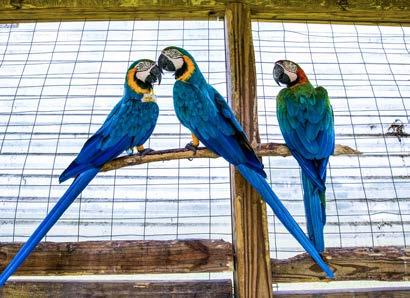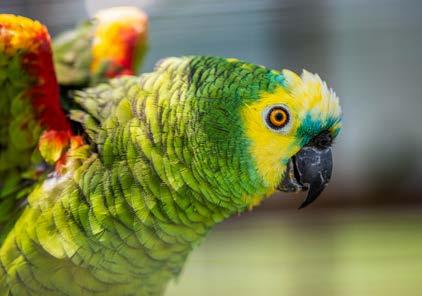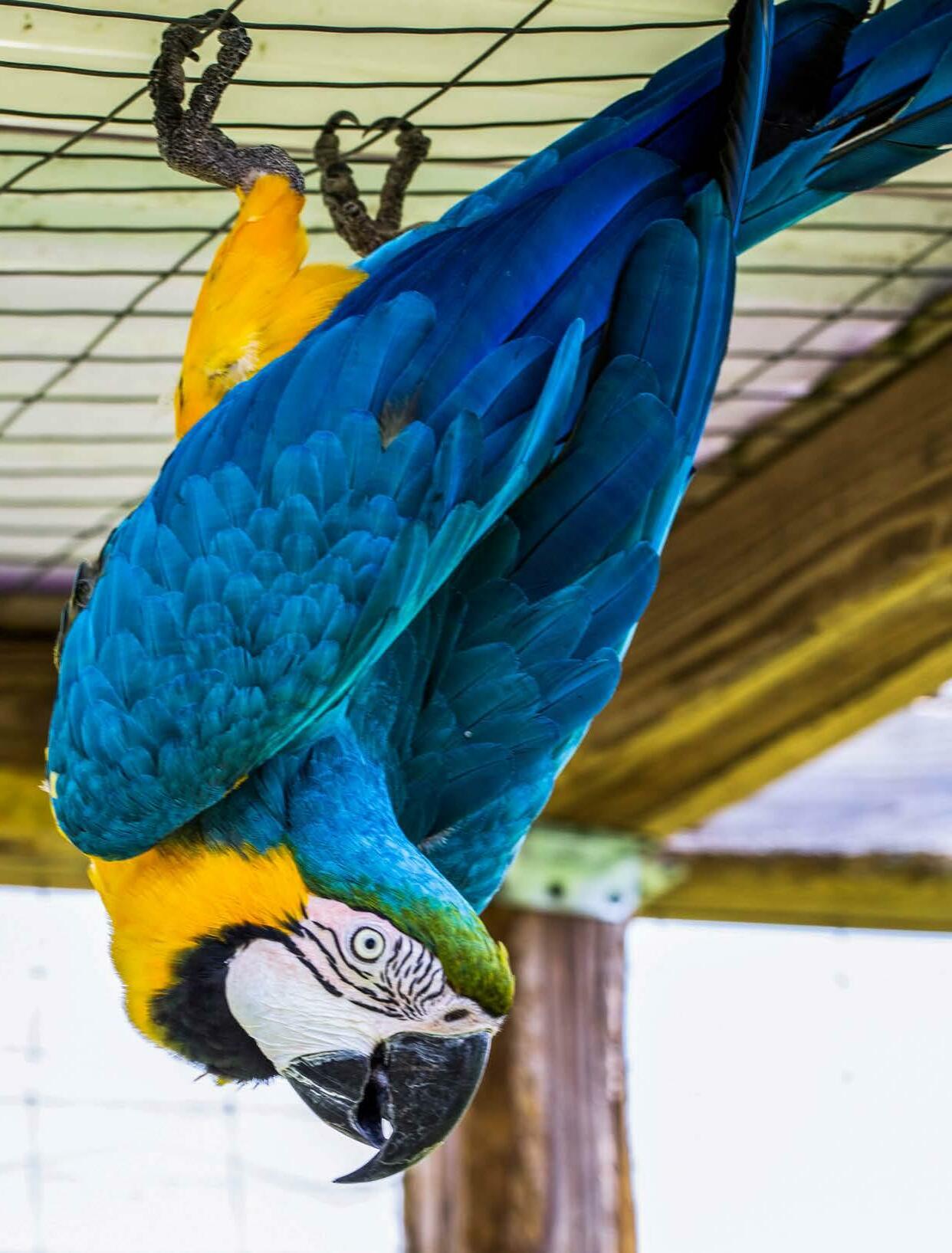
7 minute read
THIS PLACE IS FOR THE BIRDS
theBirds THIS PLACE IS FOR
Cape Fear Parrot Sanctuary in Pink Hill is a peaceful refuge and retirement home for more than 500 parrots.
BY ANNESOPHIA RICHARDS PHOTOGRAPHY BY MEGAN DEITZ
CCes Erdman can’t remember a time when his life didn’t revolve around birds. Growing up in a household of avian enthusiasts, he owned his first pet parrot at the age of 3. His parents, both active members of a community bird club, at one point even ran a bird-sitting business from home. With so many childhood years spent surrounded by birds, Erdman’s current role as director and founder of the Cape Fear Parrot Sanctuary seems predestined. “I do remember thinking at one point that I’d never have parrots when I grew up, because I hated having them in our house,” he says. “They were so loud, and my dad always kept the temperature at 78 degrees so it felt like a rainforest inside.” When Erdman left home for college, he left the birds behind as well. It wasn’t long, however, before he actually missed having them around. After graduating he decided to get a pet parrot once more. He also started the Cape Fear Parrot Club, in which bird owners could gather monthly to socialize and share tips and suggestions. Before he knew it, people started bringing him their unwanted parrots in hopes he would either keep them or help find them a new home. “Soon enough I had four birds of my own,” he says. “I loved them, but they were difficult, loud and destructive. I wasn’t going to get rid of them because it seemed like everyone else was getting rid of theirs. So I started wondering why they were so bad, and it turned out they were bored.” Although parrots are currently the fourthmost popular pets in America, keeping them confined inside a home can be challenging. Because parrots have an intellectual aptitude comparable to that of chimpanzees or dolphins, residential living does not provide them with adequate mental stimulation. Realizing this, Erdman took a chance and moved his four parrots outside to his back yard, and the results were instant.
“It solved their behavior issues immediately,” he says. “The outdoor environment was more natural to them, with rain, sun, wind and fresh air. I could tell they were so happy, just being able to live outside and be a bird.”
Motivated to create a safe haven for other birds
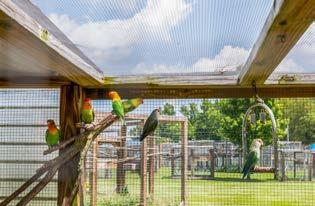
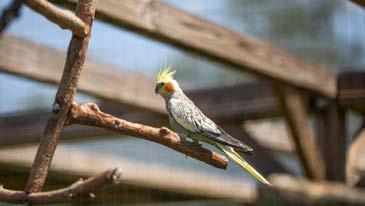
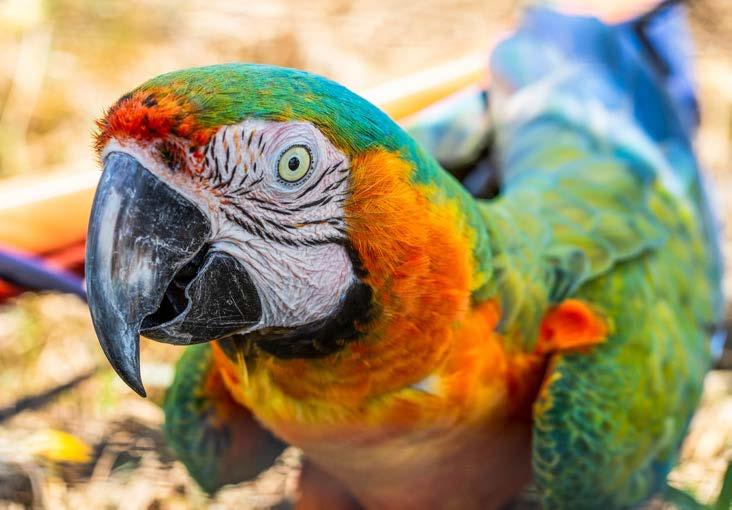
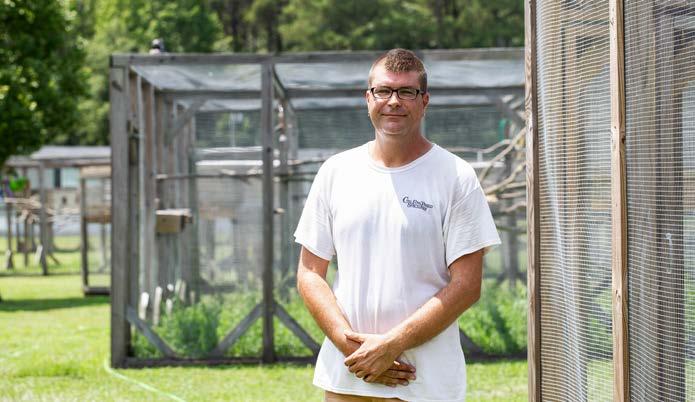
Ces Erdman founded Cape Fear Parrot Sanctuary as a retirement home for parrots, which can live up to 90 years.
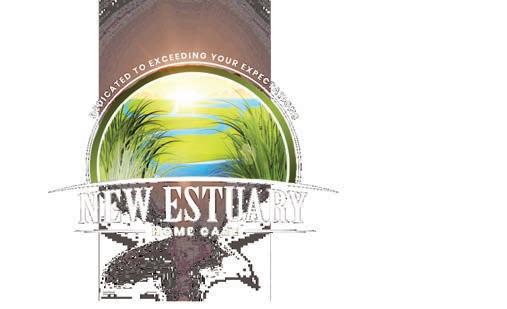
Serving New Hanover, Brunswick, Pender & Onslow Counties
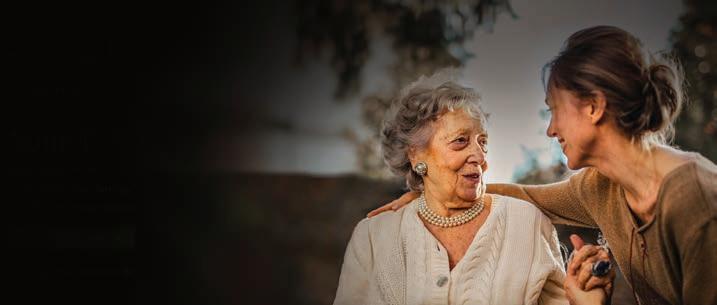
910.541.1160 • www.NewEstuaryHomeCare.com
100% of our team, from office staff, to care team members, are fully vaccinated against COVID-19.
Quarter Moon’s Wine & Beer Bar is Giving Topsail a Reason to Dance!
Bar Opens at 4pm. Check out our Facebook page for upcoming wine tasting events & live musc.
@quartermoonbooks






Books | Womens’ Clothing | Unique Gifts | Jewelry Wine Bar | Coffee Bar | Wine Tasting | Live Music




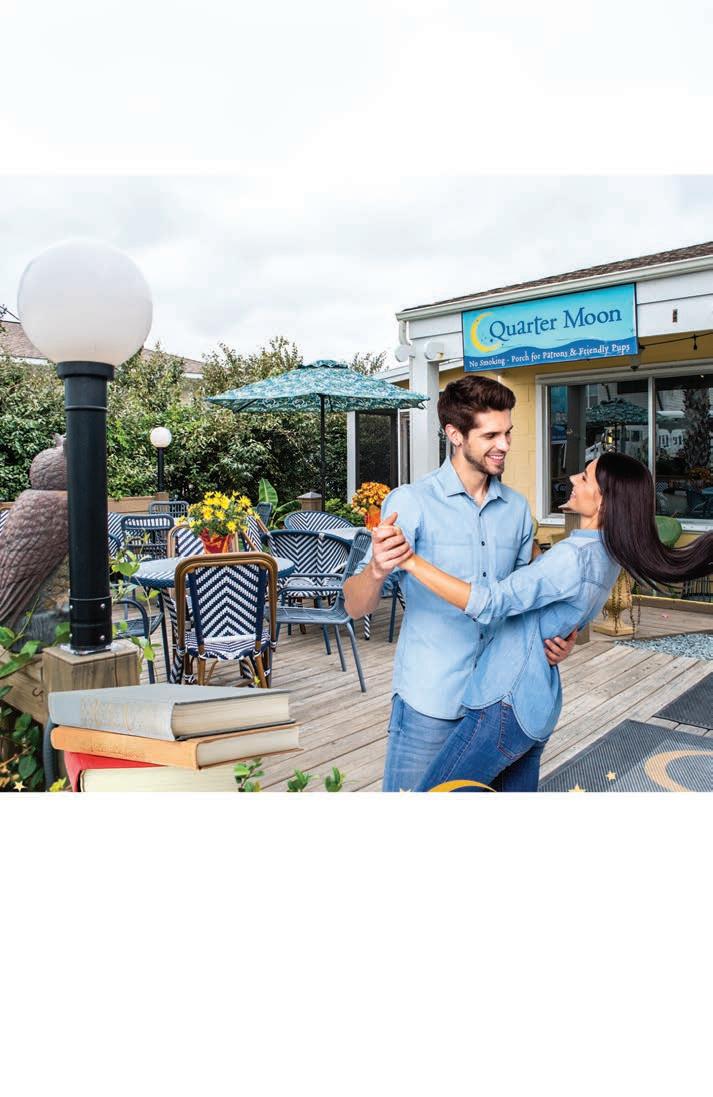
708 S ANDERSON BLVD. TOPSAIL BEACH, NC
needing a new home, Erdman decided to grow his aviary. In 2013 he moved his birds to a lot of land in Pink Hill, and Cape Fear Parrot Rescue officially became a 501c3 nonprofit. It wasn’t long before birds started coming in from all over the country, most from dedicated owners needing another option for their parrots due to a sudden life change.
“Some owners say they’d never rehome their bird, but most people just can’t have a pet for 45 years. Small parrots can live up to 30 years, and the larger ones can live to be 80 or 90 years old. So the chances of you keeping a bird its whole life are slim to none. We take in birds people can’t keep, and instead of rehoming them, they stay here forever. I call it their retirement home.”
Studies estimate the number of parrots living in captivity in the United States to be anywhere from eight to 16 million, not including the millions more currently residing in shelters, zoos, sanctuaries and breeding facilities. The high level of care parrots demand of their owners can prove overwhelming, leading many bird owners to return their birds to pet stores, sanctuaries or other homes. With an average lifespan of more than 60 years, a typical parrot may live with as many as 25 to 30 different owners.
“The reason the sanctuary exists is because parrots are still being bred by the millions, and many end up with nowhere to go,” Erdman says. “There are lots of really good people who just cannot take care of their bird anymore, and their options are to either rehome them or put them in a sanctuary like ours, where they can live more like a bird again.”
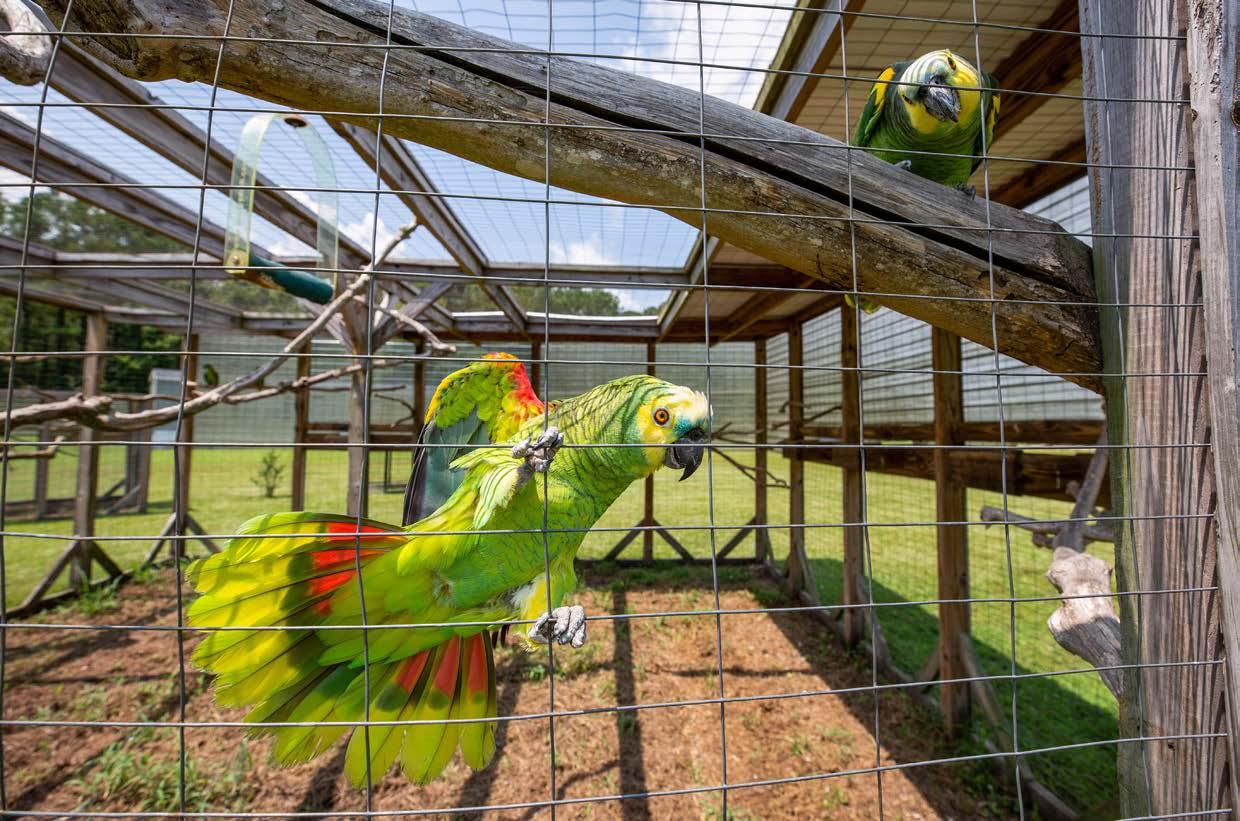
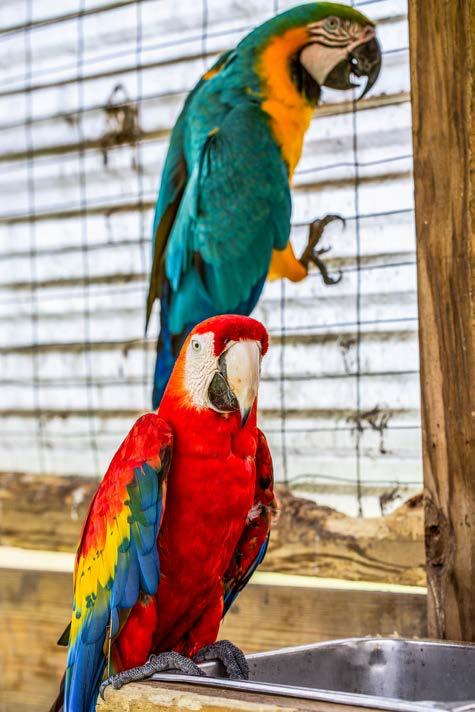
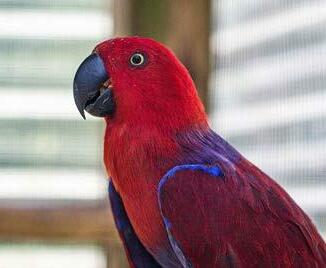
Cape Fear Parrot Sanctuary currently houses 518 birds from more than 50 species and is constantly operating at full capacity. As the only facility of its kind in North Carolina, and one of only a handful across the country, Erdman says he gets calls from bird owners from all over who need help.
“We never say no,” Erdman says. “Even if we’re completely full, owners can always pay to have their own enclosure built. We even had two birds from Maine come to us on a private jet.”
The sanctuary has also aided in parrot rescue efforts in several hoarding cases. Two weeks after Hurricane Florence in 2018, Erdman and his team agreed to take in an additional 66 birds from a group of 601 surrendered from a 1,000 square-foot house in Ohio.
“It was a lot to handle, especially since we had just returned to the sanctuary after evacuating all of our own birds for the hurricane,” Erdman remembers.
During the pandemic Erdman moved to the sanctuary to live on site as the full-time caretaker and to provide a constant presence in the event of an emergency situation. Through funding from grants such as Bob Barker's DJ&T and donations, he is able to purchase food and equipment and expand the
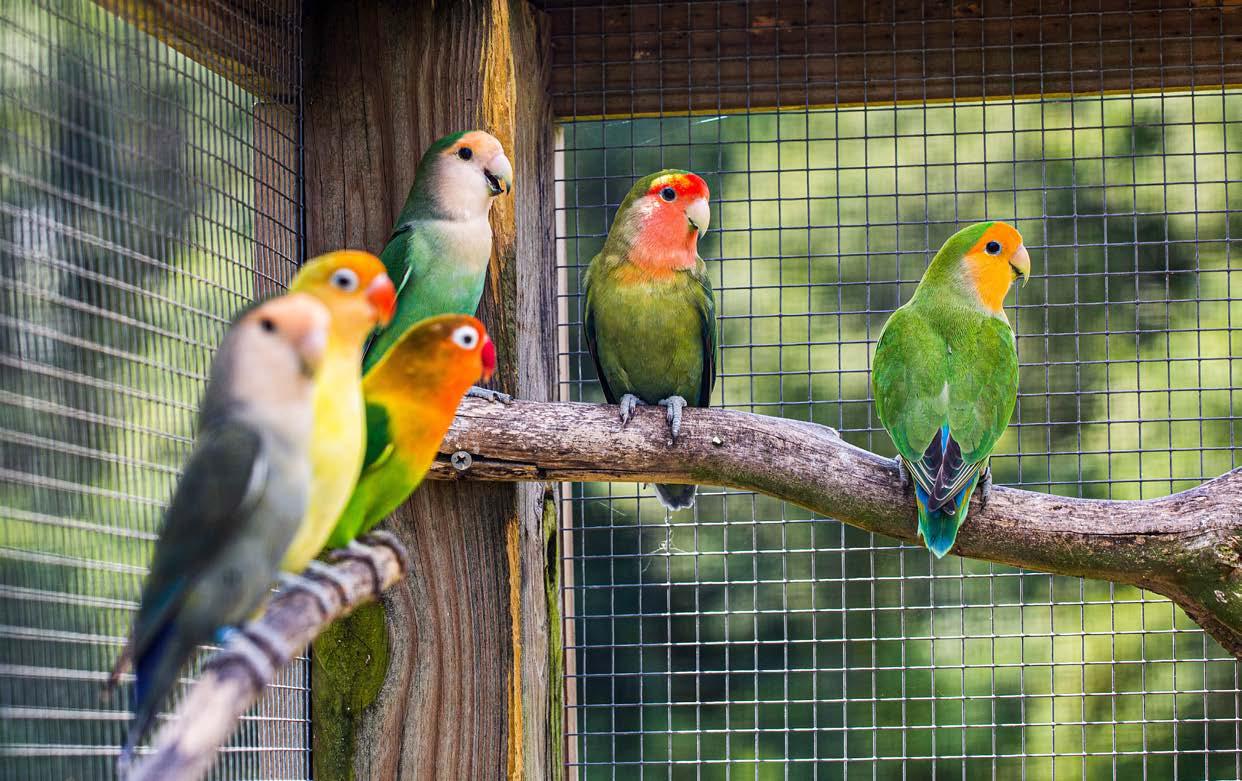
aviaries to increase the sanctuary's capacity.
As for Erdman’s three personal pet parrots (one, Charlie, who was famous for being a painter, unfortunately passed away in 2020), they have lived at the sanctuary for nearly 10 years and have never appeared happier.
“They’re totally different birds now,” Erdman says. “They have boyfriends and girlfriends, and they won’t even let me touch them anymore.”
The sanctuary's operations rely solely on grants and donations. Erdman encourages people wanting to support the Cape Fear Parrot Sanctuary to schedule a tour. Visitors will undoubtedly be soothed by the area’s peace and beauty, much like the parrots that are finally able to enjoy the rest of their lives outdoors.
“You can see it in their faces,” he says. “It’s like their souls are finally at peace.”
WANT TO MEET THE PARROTS OR HELP SUPPORT THE SANCTUARY?
Erdman welcomes visitors at Cape Fear Parrot Sanctuary. Tours cost $10 per person (free for ages 3 and younger). For more information or to make an appointment for a tour, call (910) 471-2186, email info@capefearparrotsanctuary.org or visit capefearparrotsanctuary.org
